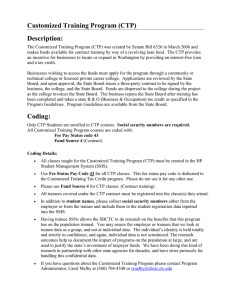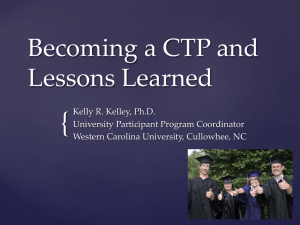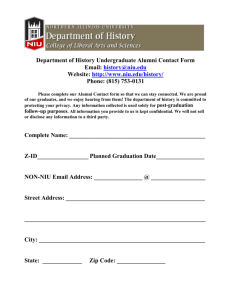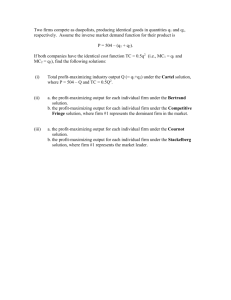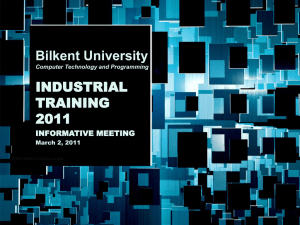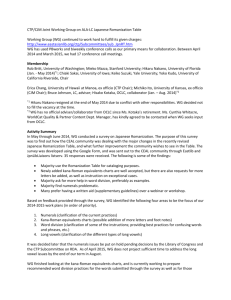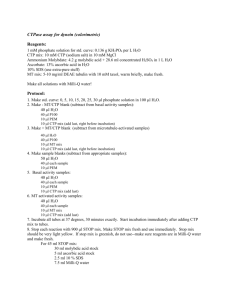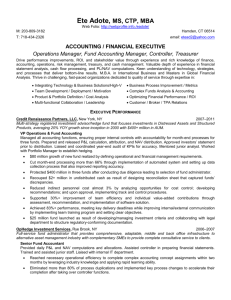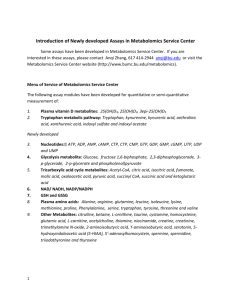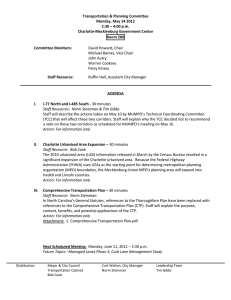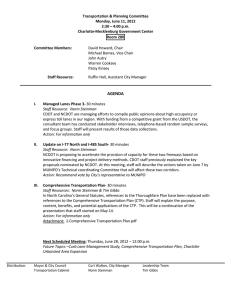Spears & Holtz–Course Transformation Project (ppt)
advertisement
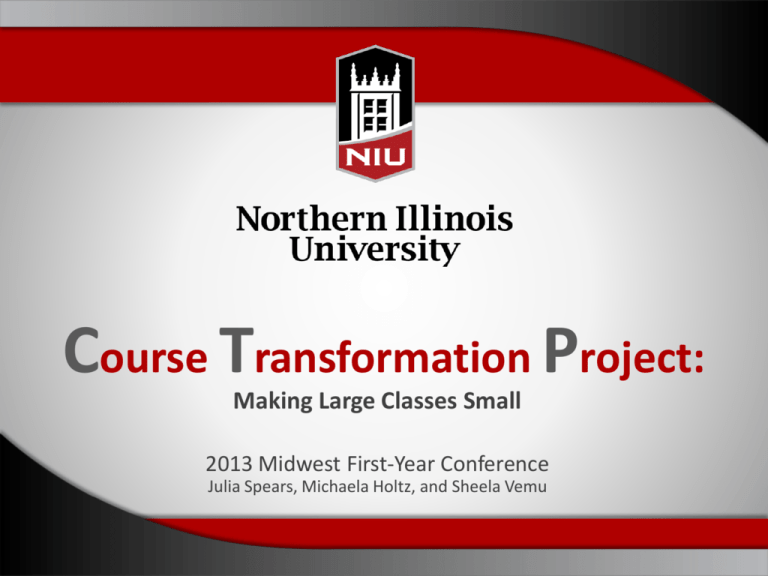
Course Transformation Project: Making Large Classes Small 2013 Midwest First-Year Conference Julia Spears, Michaela Holtz, and Sheela Vemu Overview • Share why NIU chose CTP as its approach to undergraduate instruction (Julia Spears) • Describe how CTP works at NIU (Michaela Holtz) • Demonstrate parts of CTP courses (Sheela Vemu) • Discussion & Questions Perfect Storm - National Context Perfect Storm High DFWI rates • Financial factors - tuition cannot keep exceeding inflation (CPI) • Faculty Accountability • Students Today • • • • • • Demographics - higher and more diverse enrollments Multi-taskers Higher and more diverse enrollment A reliance on the web - danger of plagiarism Tech-savvy Perfect Storm – Knowledge of Learning Today With active learning experience – students: • engage with course content, each other, and instructor • think critically • develop cognitively. Technology Emergence • radical impact on higher education • delivering the foundational content effectively in large classes • different thought process Students Today Why Course Transformation? • Passive classes lead to passive students. • Students “lost” in large lecture classes. • Students experience disconnect; they don’t see the relevancy of the classroom experience to their own lives. Goals of the NIU’s CTP • Improve SLOs in large enrollment undergraduate courses and link them to the Baccalaureate Goals • Have a university-wide impact through the establishment of a Community of Practice (20 faculty members) • Create a redesign process that is sustainable and replicable Course Transformation Project @ NIU • Based on UNT’s NextGen model • • • • Faculty teams redesign 5 - 7 courses per year – Two - year commitment – Occurs within an interdisciplinary community of practice – Senior Faculty Fellows Retreats and monthly meetings with faculty and staff Institution - wide forums/ workshops End – of - pilot and project meetings Teaching and Learning at NIU Other courses in the department Multiple sections of each redesigned course Redesign 5-7 courses per year Steps In The CTP Redesign Process (Nextgen, 2011) CTP – Blended Course (Guidelines based on Nextgen, 2011) CTP Large Lectures • Present the critical lower level concepts to provide building blocks for higher level, more complex concepts • Synthesize, clarify and expand upon (rather than deliver) content • Create interest and motivation • Provide assurance that what they are studying is relevant • Model means of interpreting and analyzing content CTP Large Lectures @ NIU • OMIS 259 (30%, 1 hour a week) - Audience response system(10 times per lecture) • ANTH 102 (30%) – assert themes from the readings and materials; cover tricky issues • PHYS 180 – lectures with 2-3 inclass performance demonstrations • HIST 171 – follow up after online quiz prior each lecture and readings assigned CTP online • Acquire lower level learning • Limit content to overcome working memory limits • Implement low-stakes assessments (quizzes) to boost students’ confidence • Practical and participatory ways to engage student with reading material CTP online @ NIU • Before class quizzes • Online crossword puzzles Learning definitions and concepts • Readings – assigned pages with built in questions • Online musical performance analysis • Lascaux Cave online treasure hunt; interactive maps • Group videos – interactive training exercise CTP Experiential Learning • Introduce emotional component; Brain-based learning • Analyze and evaluate information • Present and defend newly-acquired hypotheses CTP Experiential Learning @ NIU • The Cemetery Project – ANTH 102: examine changing mortuary practices in DeKalb County – results in written report • Create Website - WOMS 230: Students choose a current issue relating to women and/or gender, research it, collaborate with a relevant campus or community partner, take action to address that issue, and create an original and engaging website communicating the results of the project. • • Make and analyzing the sound of simple instruments (8-10 groups) • Debates; research and teach the class • Research ethics training – COMS 252: Students study and get trained on a research protocol, conducting a research interview using that protocol, transcribing the interview, work with their own and other students’ data to enact coding procedures, theorize from the results, and advocate a position based on their findings. Transformation Goals • Students think, work hard, like what they are doing, get good grades that mean something, and graduate • Doesn’t cost more and uses less space • Faculty enjoy and believe in the process FACULTY PERSPECTIVE Dr. Sheela Vemu SAIL Cycle The Science Assessment, Instruction, and Learning (SAIL) Cycle Five E Model - Engagement 1. Engagement Are we encouraging their interest? What is their prior experience of the topic? Have you peaked their interest? Personal reflection Five E Model - Exploration 2. Exploration Metacognition Identify gaps Close the gaps with explanations Five E Model – Exploration cont. Purpose <- -> Learning Report Five E Model - Explain 3. Explain Experiential learning POGIL method In class…BIOS 109 Five E Model – Elaboration & Evaluation 4. Elaboration Assignments in the new context 5. Evaluation Quizzes & grading/ Midterm/ Final NIU’s Community of Practice CTP 2012-2014 CTP 2013-2015 1. Chuck Downing - OMIS 259 1. Laura Steele – FCCL 271 2. Yasuo Ito - PHYS 180 2. Joseph Scudder – COMS 302 3. Eric Jones - HIST 170 3. Matthew Wittrup – PHHE 295 4. Sibel Kusimba - ANTH 102 4. Cathy Carlson – NURS 318 5. Sheela Vemu - BIOS 109 5. Jeremy Groves – ECON 260 6. Douglas Wallace - PSYC 102 6. Courtney Gallaher – GEOG 101 CTP - Lite 2013 • Winifred Creamer - ANTH 491 • Jimmie Manning - COMS 252 • Jason Hanna - PHIL 231 • Lyle Marschand - PHYS 150/ 150A • Amanda Littauer - WOMS 230 • William McCoy – LEEA 490/590 • Anders Linner - MATH 210 • Wendel Johnson & Meredith Ayers - UNIV 105 Questions? Thank you!
